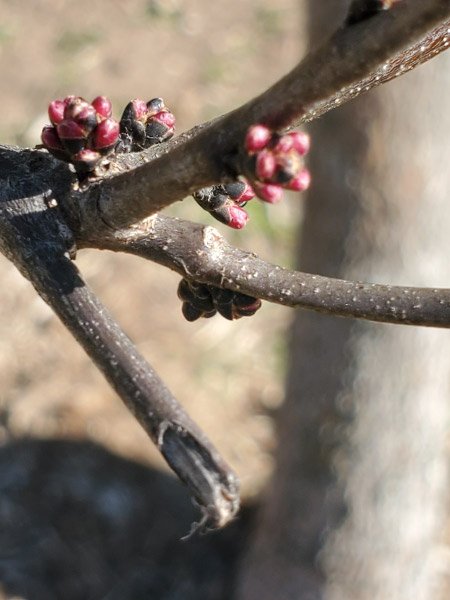Sequiota Cave Boat Tour
/My daughter enjoyed a boat tour of Sequiota Cave (in Springfield, Missouri’s Sequiota Park) last spring and encouraged us to sign up when they were offered this year. They only do the guided tour a couple of weekends in the spring and fall – leaving the cave to the roosting bats for the rest of the year. The instructions were to ‘bring your own headlamps’ so we grabbed our headlamps that we have for astronomy nights/emergencies.
It was my first visit to the park, and I was a little disappointed that Galloway Creek was dry. It has been channelized in the area near the cave entrance with abutments and concrete additions. There was a bumpy area of concrete that might work to slow the water a bit.
The buds on some of the young trees near the sign-in pavilion were colorful close up.
We picked out hardhats (which seemed to be fall squash colors!) and flotation vests and gloves for our visit to the cave. The boats were loaded at the mouth of the cave; they held 4 people (including the guide). Our guide worked for a non-profit associated with water quality and was volunteering for this event. I appreciated his comments about the cave and its water quality (and the water quality of the region).
As we entered the cave, my husband took a picture of the mouth of the cave with the truck/trailer that brought in the boats.
The cave is not pristine in the sense that it was used as a fish hatchery in the 1920s and the mounds that were once mushroom beds are still visible. The water course has been cleared (probaby would not have been navigable by boats originally). Nubs of metal from old infrastructure are still visible. But the cave features are in great shape – still actively growing…unbroken…no algae growth. There are not any blind cave creatures; if there ever were any, they didn’t survive the fish hatchery days.
But there are bats. The ones in residence during our tour were tri-colored bats – roosting alone. They are very small….but stand out because they are often darker than the cave walls (the bat is to the right of center in the picture below). There is a colony of endangered gray bats that roost during their migration that number in the 1000s. We’ll go in September to see their nightly exodus from the cave!
This might be my favorite cave tour! I liked it because it was not as commercial. The only light was from headlamps. The tours happen infrequently enough that there isn’t algae or moss growing on the cave features (although there was fuzzy white mold growing on poop from racoons that wonder quite a way into the cave). Spotting tri-colored bats was a great challenge during the tour. The water flowing through the cave made for lots of drips….but also added to the ambience of being in a cave now being left alone most of the time.

































